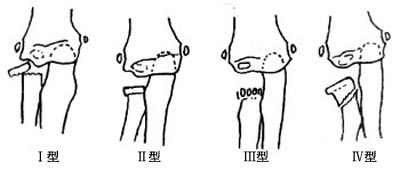| disease | Radial Head Epiphyseal Separation |
Radial head epiphyseal separation is often caused by a fall with the shoulder joint abducted, the elbow joint extended and everted, leading to the radial head impacting the humeral head. This injury is commonly seen in children's elbow joints.
bubble_chart Pathogenesis
1. Injury Mechanism and Types The injury mechanism is similar to that of a radius head fracture. Most cases are Salter-Harris type II or type I injuries. They can be divided into four types. Type I: The "tilted hat" type, accounting for about 50%; Type II: The compression type; Type III: The comminuted type; Type IV: The compression fracture type (Figure 1).

bubble_chart Clinical Manifestations
Anyone with swelling, pain, compression, and dysfunction on the outer side of the elbow after an injury should undergo X-ray imaging for a clear diagnosis.
bubble_chart Treatment Measures
1. Manual reduction: Most cases respond well; extend the elbow, pronate, varus the elbow joint, and press the radial head to reduce it. After reduction, fix the elbow at 90° flexion with a gypsum cast for 3 weeks.
2. Percutaneous reduction: Suitable for "crooked hat" compression fractures with separation when manual reduction is ineffective.
3. Open reduction: Indicated for cases where the above methods yield unsatisfactory results. Generally, no pin fixation is needed after reduction, except for old fractures, which require Kirschner wire internal fixation to prevent postoperative displacement.
Before epiphyseal fusion, radial head epiphyseal separation should not involve resection of the radial head, as it may significantly affect forearm development.




